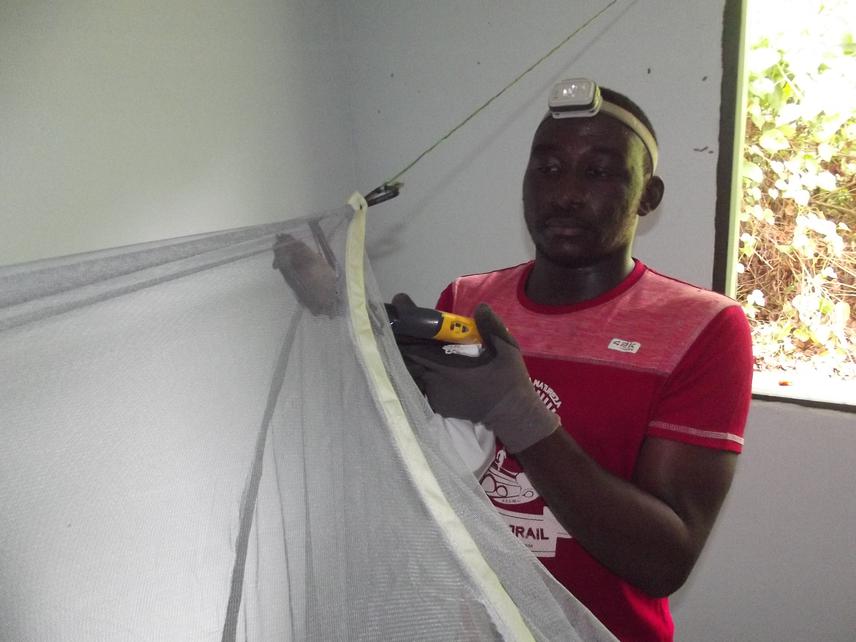Franck Patherson Meyo Okono
In south Cameroon, Campo-Ma’an National Park (CMNP) is a protected area that has long preserved its ecological integrity, but nowadays, the magnitude of human activities recorded around such as poaching, intensive agriculture, and a great number of industrial activities have major impact on environmental characteristics, altering bats’ natural habitats, then constitute a threat for their conservation. As one of the first and few bat research in CMNP, this study aims to investigate effects and impacts of habitat characteristics on bat’s distribution. By combining various traps methods (ground nets; Harp trap; canopy net; and ultrasonic bat detectors) and establishing a gradient of impacts in various habitat types, expected results will consist of an initial bat’s database, echolocation library and correlation between distribution of bat communities with that gradient.

Franck Meyo recording an insectivorous bat (DSCF2426) © Leger Offono 2023.
Clearly the project will help to know: what bat species are of conservation concern, by providing the first examination list of bat species found in CMNP, and target bat species that require additional conservation efforts; how and why to apply conservation strategies, by providing data on various habitats types occupied by bat species in CMNP, assess the level of degradation of each habitat type, and identify constraints and disturbance types to which these habitat are subjected, sampling in highly modified sites (anthropized areas) and sites that are scarcely affected (primary and secondary forest), may help to establish a gradient of variation of impacts, and potentially correlate the distribution of bat communities with that gradient; where to apply conservation strategies, by providing data on comparison and location of communities’ structures and species richness of bats in each habitat type. This will improve the mapping of bat species and sampling in the CMNP; Which educational messages to share with local people in order to reduce human pressure on bats, for that, awareness campaigns will be carried out in some villages near capture sites in order to popularize bats by handling live specimens and explain physiology and ecosystem importance of bats to riverside communities. These results will be used to definitely identify impacts then implement appropriate bat’s conservation strategies required.
Fieldwork (during rainy and dry seasons) and analysis for the project will comprise a total of 12 months. Results will be published in peer review journal, shared during conferences and colloquium, and a part of these results will constitute a part of a PhD that will be defended in front of an academic jury.